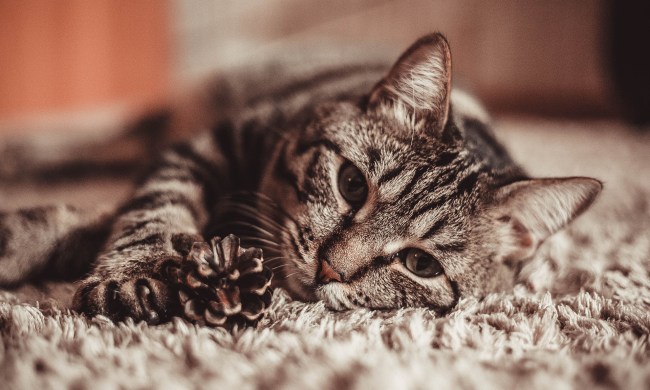You might have heard of a cat dental cleaning and thought of your own experience watching a TV in the ceiling while your hygienist cleans your teeth. While that isn’t exactly how a cat dental cleaning goes, there are a lot of similarities, and it’s just as important for you to take care of your cat’s teeth.
What is a cat dental cleaning?
Unlike you when you get your teeth cleaned, your cat is put under anesthesia, and tools are used to scrape and clean the surface and below the gum line of the cat’s teeth. The visit could also include tooth extraction if issues are found during the cleaning.
During your cat’s annual visit or a visit for oral pain, your vet might suggest getting the cat’s teeth professionally cleaned. At first, this may seem excessive, but keep in mind that cats have just as many dental problems as humans, and many of them can be painful.
Once your veterinarian has seen signs of dental buildup, and you’ve agreed to a dental cleaning, they may suggest a few tests and checkups before the procedure to ensure everything goes smoothly. Among these tests and checkups are:
-
- Blood test
- Urine test
- Electrocardiogram
- Blood pressure
- X-rays
- Thyroid test
Since cat dental cleanings happen under anesthesia, these tests are necessary to ensure your cat’s safety during the procedure. If anesthesia makes you nervous, rest assured that anesthesia risks for cats are as low as they are for humans.
What are the health benefits?
Just like humans, cats can suffer from dental disorders like periodontal disease or tooth decay. These can be painful and dangerous to your cat’s health. Not only could they lose teeth, but dental diseases also could affect other areas of their health.
An estimated 85% of cats have periodontal disease by the time they reach 6 years old. Another 50% are estimated to have tooth resorption, an excruciating issue in which parts of the tooth, including the root, are missing due to irritation or injury. Resorption can lead to complete tooth loss.
Regular cleanings by a veterinarian and at-home care can reduce the risk of these painful diseases. At your cat’s annual veterinary appointment, the vet will inspect the teeth for signs of problems.
Here are some symptoms to look for at home that could indicate your cat is experiencing oral pain.
-
- Dropping food
- No interest in eating
- Running away from the bowl
- Drooling
- Bad breath
- Change in behavior
- Chewing on one side
- Trouble chewing
- Swallowing without chewing
A cat with unresolved dental issues can also be at higher risk for heart, liver, and kidney disease. Want to know more? Check out our guide on why do cats hiss at you.
Cat dental insurance
The necessity of pet dental insurance is like auto insurance – it is something you hope you never need, but you’re glad to have it when you do. Many insurance providers, such as Progressive, offer pet insurance that covers things like dental cleanings. However, it’s important to note that not all these plans cover preventive, elective, or cosmetic procedures.
A few pet insurance companies do cover the costs of treating gingivitis, root canals, broken, chipped, and fractured teeth. With many insurance options out there, you’re sure to find one that works for you.
At-home dental care
Although regular dental cleanings are great for cats’ oral health, home care is an important piece of their overall dental care. Healthy kitty gums start with regular brushing and proper nutrition.
The type of food your cat eats can impact their dental health. Supplying your cat with the proper nutrients will give their body the tools it needs to fight off disease. Dental treats can also be a no-fuss way to keep tartar to a minimum. Similarly, hard kibble can help scrape your cat’s teeth, so avoid too much soft food if possible.
Tips for brushing your cat’s teeth
When brushing your cat’s teeth at home, here are a few tips to keep in mind.
Never use human toothpaste on your cat. Human toothpaste contains chemicals and ingredients that can harm your pet. Brush kits such as these can be found on Amazon and are an excellent way to keep up with your cat’s dental health.
Before you even begin brushing, you can expect resistance from your cat. Initiate your brushing ritual by merely introducing the brush to your cat. You may also want to try a finger brush, like this one from Amazon.
Slowly introducing the brush and offering treats when your cat interacts with it will provide positive reinforcement when it comes to brushing.
Over time, begin brushing their teeth gently and for short periods, then extend the periods bit by bit as they get used to it. Eventually, they may even enjoy it!
We all want what’s best for our pets, and our cat’s dental health is key to their overall health. Home brushing and annual vet visits will ensure your cat’s dental health is maintained.



